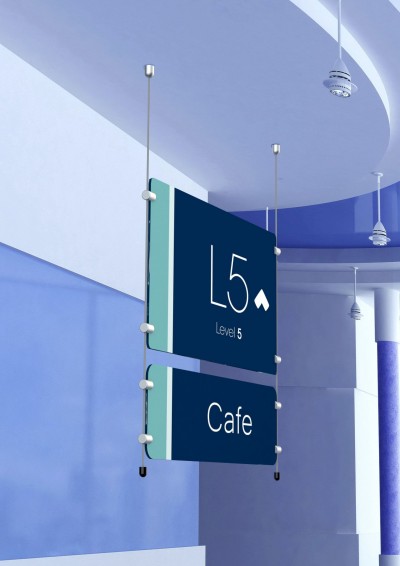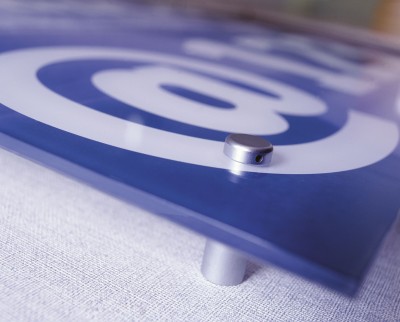By Janice Fairfield
As the sign industry’s customers become more and more demanding, it is increasingly important for sign shops to be prepared with a toolkit of high-quality components for successful installations that will not only prove durable, but also look fantastic. This will involve keeping fully up to speed on what components are available on the market, but also ensuring they work together.
Sign installation components may look okay when listed in a brochure, only to disappoint upon delivery, with threads that are not smooth or a finish that does not meet expectations. Another common problem is a mismatch of fittings from different suppliers, which can spoil an otherwise co-ordinated design scheme.
There are different benefits to using a suspended cable or rod system or, on the other hand, standoffs. Both options have proved themselves in professional settings, but in certain circumstances, one will offer more flexibility than the other. Further, the way a sign is fixed to a wall can make a tremendous difference to its visual appearance and perceived value.
Standoffs
A standoff is simply a fixture that holds a sign away from a wall, but it can also help enhance the sign’s appearance. Standoffs can be used whenever the client wants a fixed-position sign—no matter its size or shape—mounted to a flat wall surface (or, in some cases, a desk or display unit).
Standoffs are often used in office reception areas, for example, to mount directory signage, collages of images or artwork to the wall. They are also frequently used to display large-format menus for restaurants and promotional signs for retail stores.
One of the advantages of standoffs is they make it relatively easy to change a sign at a later date. Also, since they hold the sign away from the wall, any dust gathering on that wall will drop down behind the sign, helping it to remain clean in appearance.
The majority of standoff fittings on the market today have a small hole on the side where they can be tightened with an Allen key, making them pilfer-resistant. Another benefit of a standoff is it can be visually attractive in its own right, compared to an ordinary wall screw that becomes rusty over time.
Not all fittings are the same. Choosing the right one for the job at hand will save time and money.
Small and large signs alike can easily be accommodated, with standoffs ranging in diameter from 12 to 25 mm (0.47 to 0.98 in.) and in depth from 14 to 75 mm (0.55 to 3 in.).
Fittings can be made in two or three parts. A three-part fitting is more expensive, but the advantage is it will be much quicker and easier to fix into place.
The back section is a brass boss (i.e. protuberance), designed to be quickly and simply screwed to the wall. It will take screw threads up to 4.8 mm (0.19 in.) in diameter (i.e. ‘#10 screw’), which means a solid fixture can be achieved in a brick or concrete masonry unit (CMU) wall. The hole in the boss is big enough to allow an ‘interset’ fixture, which means the standoffs can be secure on partition walls.







